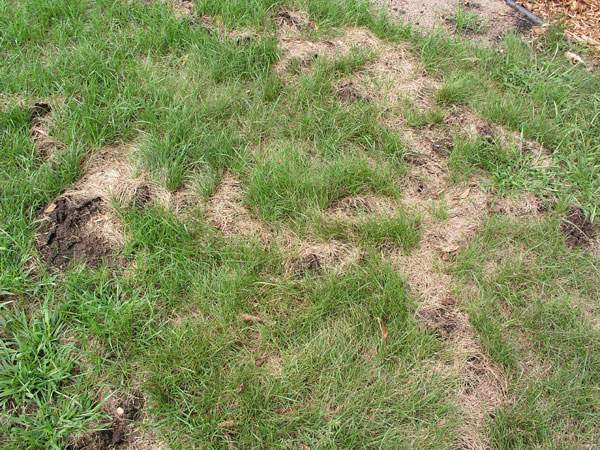I can’t be sure when this folktale began, but I would like to take a moment to clear up a common misconception on the relationship between moles and grubs.
There is none.
There you have it. Yes, a mole will eat a grub, but their main diet consists of earthworms and other insects. Moles can and do make a mess of a lawn in a hurry and therefore should be addressed. There are two proven techniques for control: trapping or baiting. Whenever addressing moles, we need to be sure to be working on the active tunnels. If the damage is older than a few weeks, we recommend stomping or rolling down the tunnels, and removing the piles. This way you can watch for new activity and know exactly which tunnels to concentrate your efforts on.
Just a few helpful hints on control:
- Trapping- When trapping, we recommend using a loop style or choker style trap. They are cheap, simple to set, and effective. We have found that in harder soils, the harpoon style traps can push themselves out of the soil resulting in a sprung trap and no dead mole.
- Baiting- Talpirid or Tomcat brand baits work well. They typically come in trays and are designed to mimic earthworm characteristics. After locating the active tunnel, poke a hole in several areas, and drop a worm in the tunnel every 3-4 feet. Once the worm is inside, pinch the hole closed again. Be sure to use a fresh set of dish gloves to prevent your scent from touching the worm, as well as protecting yourself from the poisonous worm. Wait 2-3 weeks and stomp or roll down all the tunnels, and look for new damage to retreat as necessary.
If you are looking for more information on mole control, here is a link to an old article on the matter written by Dr. Kevin Frank from Michigan State University: http://msue.anr.msu.edu/news/moles_in_the_lawn
As always, let us know if you have any other questions!
“I treat your turf like it’s My Turf”

